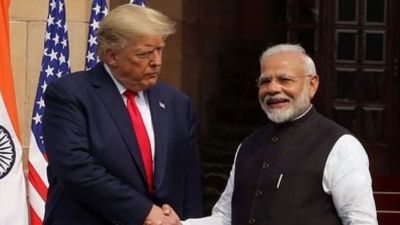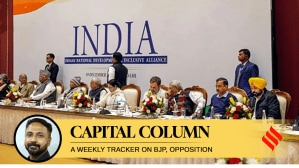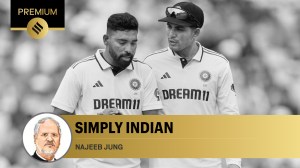Click here to join Express Pune WhatsApp channel and get a curated list of our stories
Wedding invitation cards: A marriage of tradition and technology accelerated by Covid
Wedding card businesses in Pune report a consistent 30-70 split between printed and digital orders.
 The wedding card industry is adapting, blending innovation with tradition. (Express Photo)
The wedding card industry is adapting, blending innovation with tradition. (Express Photo)With the wedding season on in full swing, it’s noticeable that the age-old practice of distributing printed wedding invitations is undergoing a significant transformation. Driven by convenience, cost-efficiency and sustainability, digital invitations are fast becoming the preferred choice for tech-savvy couples.
Covid triggered the shift
Traditionally, families ordered thousands of printed cards to share the joyous occasion with their communities. Before the pandemic, businesses such as Chintamani Cards thrived on bulk orders, with many families ordering 1,000 to 2,000 cards per wedding.
“Pre-Covid, printed invitations dominated the market,” said owner Kishore Katre. “We had peak seasons where customers would queue up weeks in advance to place large orders. It was a time of grand invitations and elaborate designs.”
 Some customers go above and beyond to preserve the sentimental value. (Express Photo)
Some customers go above and beyond to preserve the sentimental value. (Express Photo)
The pandemic, however, drastically altered customer preferences. Lockdowns, restrictions on gatherings and a growing reliance on digital tools led to a surge in demand for digital wedding invitations. “The shift was sudden. During the pandemic, almost 90 per cent of our orders were for digital cards. Customers needed a safe, quick, and efficient way to invite their loved ones,” Katre added.
Hybrid trend
In 2024, the market shows a hybrid trend. Digital invitations continue to rule, accounting for nearly 70 per cent of wedding invitation orders, but printed cards are making a gradual comeback for sentimental reasons.
Convenient, personal and economical
For many, the shift to digital simplifies wedding planning. A bride-to-be shared her relief. “Digital cards saved us so much time and effort. We no longer needed to travel house to house distributing invitations. With just a click, we sent them to everyone.”
Another bride recalled her excitement about personalising her digital invitation: “We included a video message and photos of us from over the years. It felt like a warm, personal way to invite people to our special day.”
Printed cards go bespoke, too
Yet, for many families, printed cards remain a cherished tradition. Praveen, owner of Radha Krishna Cards, noted, “Before Covid, we regularly handled bulk orders for elaborate designs. After the pandemic, the demand shifted dramatically toward digital, but printed cards are still significant for close family or sentimental keepsakes.
Digital invitations dominate, but its no substitute for the emotional value of holding a beautifully crafted card.”
Some customers go above and beyond to preserve this sentimental value. A bride who married recently said she spent hours working on a custom printed card design inspired by her lehenga. “When my parents saw the invitation matching my wedding outfit, they were moved to tears. It brought everything together in such a meaningful way,” said the bride who did not want to be named.
Hybrid makes for a perfect alliance
Saadna Saikar, owner of Krushana Cards, observed evolving trends closely. “Before the pandemic, we handled a near 100 per cent printed card market. During Covid, we adapted to digital solutions almost overnight. Now, in 2024, about 30 per cent of our customers still opt for printed cards, often as keepsakes or to honour older relatives.”
Digital options like QR codes for location tracking and creative video invitations remain popular with younger couples, but families still value the act of personally handing over a card to elders. “It carries emotional weight that digital cannot replace,” Saikar said.
The wedding card market in 2024 reflects a balance between tradition and innovation. Businesses report a consistent 30: 70 split between printed and digital orders. This year, hybrid solutions—digital cards paired with limited printed designs—have become the norm. Customers seek minimalistic, eco-friendly designs in both formats, reflecting contemporary values.
Adapting and blending innovation with tradition, the wedding card businesses now offer hybrid solutions that combine digital services with bespoke printed keepsakes to make for a perfect patnership in the new world.
Click here to join Express Pune WhatsApp channel and get a curated list of our stories












